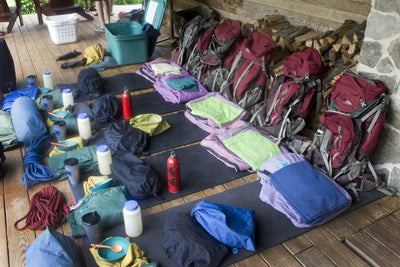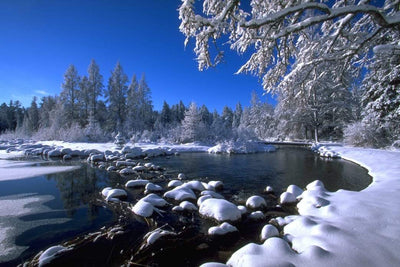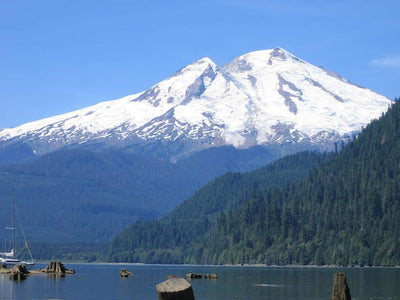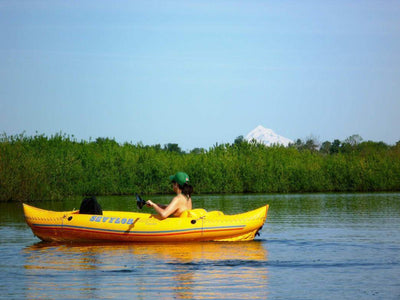7 Underrated Ways to Leave No Trace in the Outdoors
Everyone knows about packing out your trash, or what to do when nature calls in the wilderness. These are number one and number two (literally) in the leave-no-trace playbook for those of us who care about preserving outdoor spaces for future generations to enjoy.
Well, okay, apparently not everyone knows. We see trash (and pick it up) all the time, just like you do. We’re as baffled as you are when we see some yahoo flick a cigarette butt out the window of their car. Do some people simply not care? Further education is clearly needed.
For those of us in the know, though, minimizing our own impact goes beyond these two obvious line items. If you’re already doing the easy stuff, here are a few often-overlooked ways to tread lightly in the great outdoors.
1. Travel on durable surfaces.

This one should be easy: walk on the trail. Don’t cut switchbacks, which creates both erosion problems and ugly “social” trails. If you have to go off-trail, tread carefully; avoid fragile alpine flora or cryptobiotic desert soil. Of course, we all see evidence that many outdoor users aren’t doing this. We see all those social trails near lakes and campsites, and trampled vegetation near crags and scenic overlooks.
For all trail traffic, including mountain bikers: think about durable surfaces, and whether your boots or bike tires are leaving a discernible mark on the terrain. If you’re leaving ruts because of wet or freeze-thaw conditions, ride somewhere else; no matter how many slow-motion edits online seem to imply otherwise, it’s not okay to skid your tires and sling “brown pow” or pioneer off-trail alternate lines.
This goes for photographers, too, despite the temptation to stomp off-trail to that perfect vantage point. Sure, the adage may say: “Take nothing but photographs, leave nothing but footprints.” The photos are fine… but why leave footprints where you don’t have to?
2. Park your car on durable surfaces, too.

What do you do when you arrive at a trailhead, and the parking lot is full? Do you just pull off the road wherever it’s convenient? In some environments this may be acceptable, but in many it’s not. If simply walking on cryptobiotic soil or alpine meadows has a negative impact on those surfaces, imagine what parking your 4Runner on them does. Additionally, if that parking lot is in a neighborhood, imagine how thrilled the neighbors will be if you’re parking on their lawn.
I’ve seen more than a few parking lots in National Parks absolutely overrun with cars parked all over sensitive terrain and their inhabitants absolutely trampling that terrain on the way in and out of those cars. We don’t think the answer is more parking and bigger parking lots, especially when the mission of the National Park Service is to protect and preserve these beautiful places; we think preservation includes an awareness of where you pilot your vehicle in the first place.
3. Respect permit limits, closures, and quotas.

Speaking of full parking lots, some areas have chosen to counteract overuse by instituting lotteries, permit systems, and daily quotas. Sometimes that parking lot is full because, frankly, that’s how many visitors per day are a sustainable number without degrading the resource. Sometimes, areas are temporarily (or permanently) closed so they have a chance to recover. Some places, as we’ve noted in the past, are being loved to death.
We know it sucks when you arrive at the start of your day’s objective and it’s closed, or when you don’t win the lottery for that bucket-list trip, but the outdoors isn’t yours alone. We’re in this together, and we need to work together to protect the wild places we love. There are plenty of incredible places out there; be flexible with your plan, have a backup, and don’t fall into the trap of thinking that the only places worth visiting are on “10 best” lists and inside National Parks.
4. Avoid creating new campsites.

Well, aren’t we a buzzkill! While social media can seem like a competition to see who can pitch their tent in the most ridiculous place (we love @youdidnotsleepthere), existing campsites are usually there for a reason. Limiting the number of sites at a given location helps limit human impact to those designated places. If there are two camp spots at your favorite backcountry overlook, and you create a third, you’ve increased the visible impact by fifty percent!
You might be disappointed that the designated sites at that pristine alpine lake are two hundred feet from the water instead of two feet, but there’s a reason for it. You don’t have the right to overrule the land manager by making a new one! It’s easy to convince yourself “if I just put my tent here for this one night, I’m not really creating a campsite,” but you’ll leave signs of your visit; the visitor after you is likely to repeat your indiscretion, and the visitor after that, and what’s done cannot be undone.
5. Don’t build fire rings, and consider skipping the campfire entirely.

Look, we know that your Instagram shots are soooo much cooler with the glow of a campfire, and we all know a boutique, hand-painted hatchet is the ultimate accessory for the modern lumbersexual. We’ve also seen campsites surrounded by stumps where small trees used to be, the surviving tree stripped of every branch within arm’s reach.
It should go without saying that you should definitely skip the campfire if your region is experiencing a drought, you should respect any and all burn bans in place and, if you absolutely must have a fire, you must also make certain it’s completely out before moving camp. It almost sounds silly to type out, but every year major wildfires are started by careless campfire management. Roasting marshmallows over a canister stove may not be as sexy, but it’s also less likely to incinerate your favorite wilderness.
We recently published an article about campfire safety, but there are also some excellent articles about whether campfires are necessary at all (we recommend this one and this one). Think about it. Do you really need to have one?
6. Wash your gear, wash your kayak, and don’t transport firewood.

It’s important to understand that our impact on outdoor environments goes beyond what we can see, and beyond what is immediately apparent. A variety of pests and invasives—the hemlock woolly adelgid, the emerald ash borer, zebra mussels, water hyacinth—can be transported from watershed to watershed, and from forest to forest, sometimes with heartbreaking results.
We’re slowly watching our Eastern Hemlock trees die off, one by one, as the Adelgid spreads throughout the Appalachians. These ghost trees are solemn reminders that, sometimes, we leave behind more than footprints if we’re not careful.
You’ve probably seen signs at campsite kiosks and ranger stations instructing visitors to avoid transporting firewood and so forth. Not only should we be following these rules, we should make sure our fellow outdoor enthusiasts are aware of them, too.
7. No dams… and, seriously, stop stacking rocks!

Rock-stacking has become a major trend, and it absolutely has to stop. Cairns to mark a trail are fine, and are sometimes necessary, but we’re not talking about cairns. We’re talking about the bizarre proliferation of stacked rocks in certain parts of the world. No, you’re not enhancing the beauty of the natural environment. No, the wilderness doesn’t need improvement, especially if you consider ubiquitous signs of human meddling to be an improvement. It’s more of an eyesore.
As for dams, we see lots of river rocks being moved to create swimming holes, capture hot springs, and the like. This has a real impact on certain types of aquatic creatures, specifically the extremely interesting (and highly endangered) hellbender. Seriously, just leave the rocks where they are, and enjoy nature as it is. Scree slopes and rocky creek beds are not your personal Lego set.
Last Word
We’re not going to tell you exactly how to enjoy the outdoors; maybe you like to listen to Swedish death metal on your trail run; maybe you like to yell “wooo” at the end of a long downhill on your mountain bike, and more power to you on both counts.
Outside activity does, however, require an awareness of the world around you, and of the impact your visit has on it. We think that awareness should go beyond just burying toilet paper and carrying out your Snickers wrappers, and we hope you agree.
*We highly recommend some level of Leave No Trace training, not only for those new to the outdoors but for experienced outdoor enthusiasts. Learn more about Leave No Trace here. *
Written by Jeff Bartlett for RootsRated in partnership with BCBS of Tennessee.




